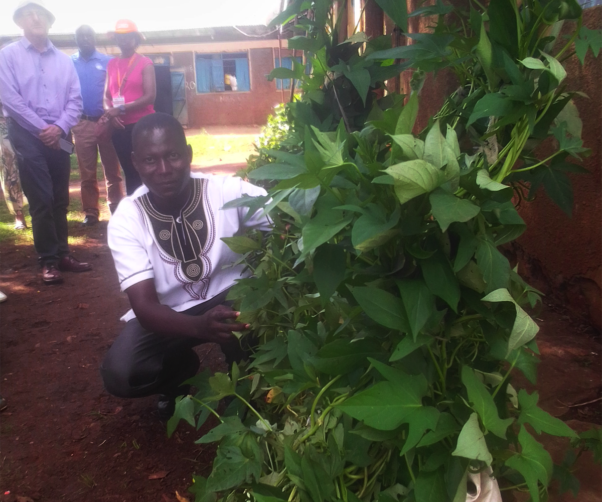Ever wondered how schools in challenging environments can play a key role in transforming communities? An exciting initiative is taking place in the northeastern region of Uganda, specifically Karamoja, where the conditions are semi-arid with unpredictable rainfall and intermittent droughts. The World Food Programme (WFP), partnering with Farm Concern International (FCI), addresses food and nutrition security and creates a positive ripple effect in neighboring rural communities. Let’s delve into how school gardening programs are sowing the seeds of change in this region.
From Challenges to Collaborations
Karamoja’s unique challenges demand innovative solutions. The WFP, in collaboration with partners, initiated a program supporting 12,000 day-schooling pupils across 1200 primary schools in 10 districts. This initiative has gained popularity, reaching even non-schooling children from neighboring communities during lunch hours. The goal is not just to provide immediate relief but to create sustainable interventions aligning with the WFP country strategic plan and the National Development Plan.
Orange-Fleshed Sweetpotatoes and High Iron Beans
Recognizing the need for nutritional diversity, the WFP joined forces with the International Potato Center (CIP) for vitamin-A-rich sweetpotato varieties (OFSP) and with CIAT for high iron beans (HIB). These collaborations involve seed supplies and crucial agronomic training. The aim is to supplement direct food handouts by engaging schools and linking initiatives with respective communities, addressing the root causes of food insecurity and malnutrition.

School Gardening Programs in Practice
The success lies in practicality. School gardening programs are not just about textbooks; they are hands-on learning experiences. These initiatives provide relief supplies while empowering pupils with essential skills. Additionally, school-to-community small-pack seed deliveries by school children extend the benefits to surrounding households.
Understanding the Climate
Understanding the weather patterns is crucial in a region where climate conditions are less than ideal for traditional agriculture. Development efforts need to align with the prevailing climate. Participants are guided to understand rain patterns and correlate them with crop production seasons like OFSP and HIB. The focus is on short-maturing, drought-tolerant crops, emphasizing the importance of timely planting.
Innovative Triple S Method and More
Innovative methods like Storing roots in Sand and Sprouting (Triple S) were introduced to tackle challenges like the lack of local seed sources. This cost-effective and straightforward approach involves waiting for sweetpotato roots to produce vines before planting, navigating through dry periods and ensuring early access to planting material. Seed packs for HIB were also introduced, showcasing adaptability in the face of challenges.
 Seeds of Change
Seeds of Change
The Triple S method, despite its simplicity, requires strategic storage of roots and the provision of adequate planting material during critical periods. Schools like Nakoreto Primary in Kotido district strategically plant roots for storage, ensuring a sustainable supply. Churches, too, become active participants, recommending increased seed conservation to provide communities with planting material in subsequent seasons.
High Iron Beans: A Nutrient Boost for Karamoja
Introducing iron-rich beans in 2021 was a game-changer. These beans, specifically bred for high iron content, address nutritional deficiencies in the region. With no existing seed system for these varieties, a comprehensive program was initiated to train local seed producers, seed inspectors, and agro-dealers. The program supported demonstration fields in schools, increasing awareness and preferences for certain varieties like NAROBEAN 1.
The Harvest
While progress is evident, challenges remain. Seeds stored in drums at schools lost viability due to poor storage conditions. However, forward-thinking youth groups, like the Longaro mixed agro-producer dealers in Kaabong, are showcasing successful seed storage practices.
Towards a Sustainable Future: Recommendations and Acknowledgments
Consolidating success involves clear guidance, technical support, and community involvement. The preference for central community seed storage, highlighted by selected schools, calls for further support and guidance. Collaborative dissemination of technologies and knowledge is crucial, emphasizing platforms like the Parish Development Model. Investing in research and documenting innovations will play a pivotal role in ensuring the sustainability of these initiatives.
The journey of growing nutrient-rich crops in Karamoja schools is not just about farming; it’s about transforming lives and communities. Acknowledging the collaborative efforts of partners, this initiative is a beacon of hope, proving that even in challenging climates, the right seeds, knowledge, and community engagement can create a sustainable recipe for success.
This work was undertaken as part of the One-CGIAR Seed Equal Initiative and funded by NORAD.
